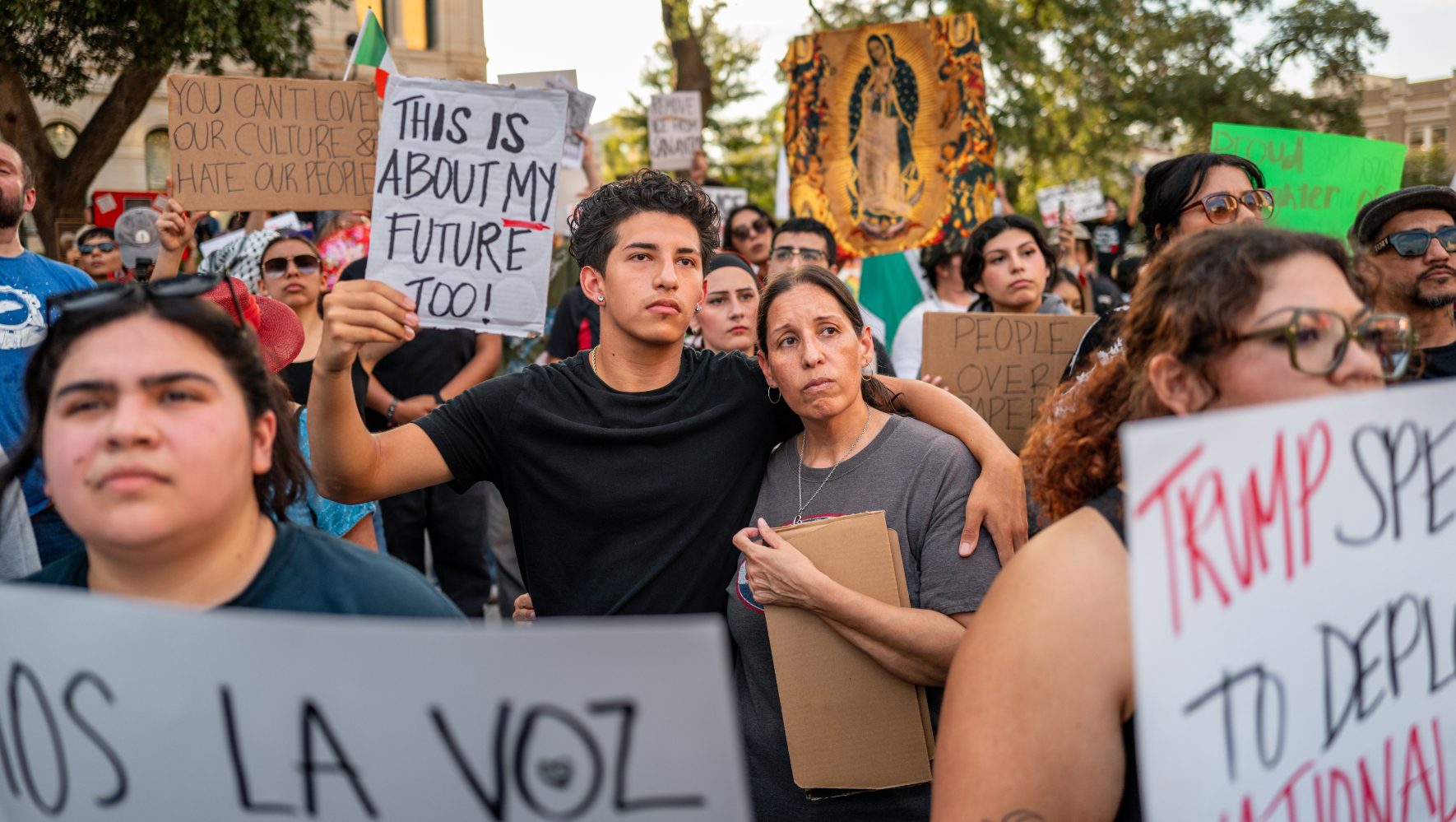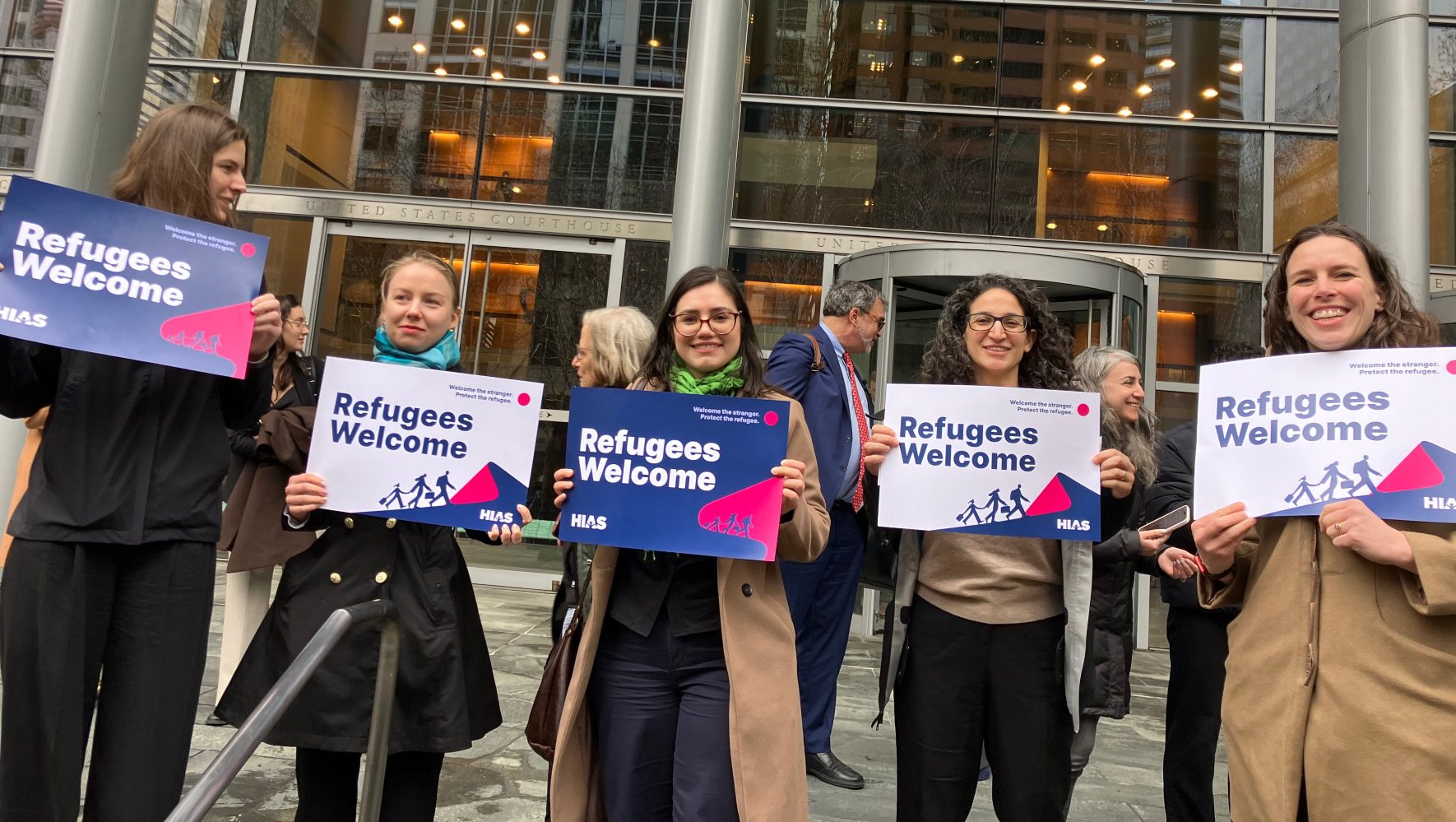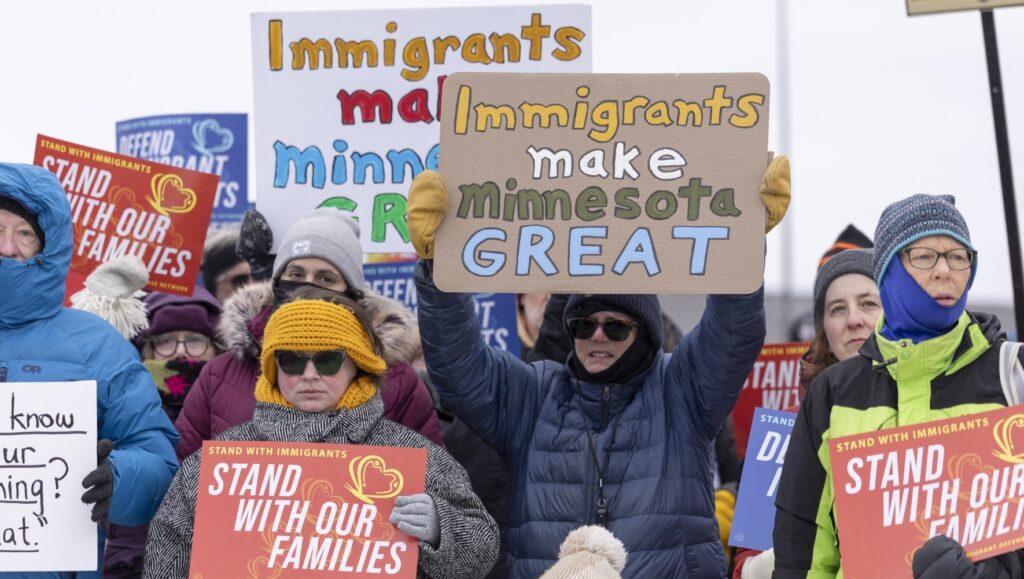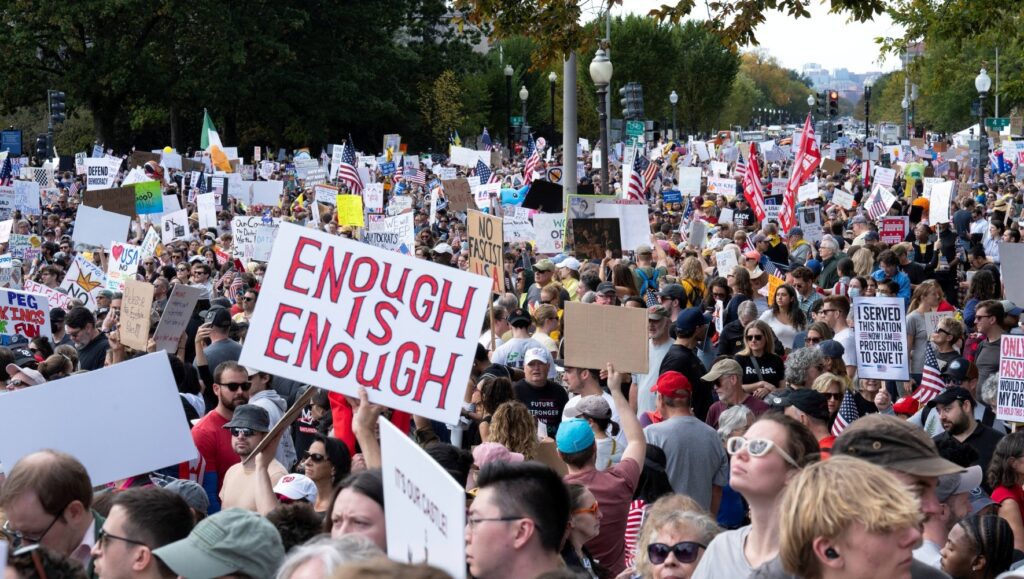
In recent weeks, intensifying raids targeting immigrants — led by Immigration and Customs Enforcement (ICE) — have emerged as a major flashpoint in U.S. politics. Mass protests erupted in Los Angeles in early June after ICE officials conducted raids across the city, often without identifying clothing and wearing face coverings. Subsequently, the Trump administration dispatched thousands of members of the California National Guard and 700 active-duty Marines over the objections of local and state officials.
The increased activity from ICE nationwide reportedly stems from a directive from Deputy White House Chief of Staff Stephen Miller and Department of Homeland Security (DHS) Secretary Kristi Noem to arrest up to 3,000 immigrants each day — a more than fourfold increase from the previous daily average. The raids have created a climate of fear and apprehension for immigrant communities across the country as ICE targets individuals who, by an overwhelming margin, pose no threat to public safety in the U.S. and in fact, contribute greatly to the economy and social fabric of their communities.
While the headlines have subsided, the issue will not. The major reconciliation bill currently up for debate in the Senate — euphemistically known as the “One, Big, Beautiful Bill” — would, if passed, greatly expand funding for ICE’s enforcement efforts, expanding detention bed capacity, hiring more ICE agents, and upgrading surveillance technology.
Here’s what else you need to know about the ICE raids:
Give today
What is ICE? What does it do?
U.S. Immigration and Customs Enforcement (ICE) operates under the Department of Homeland Security (DHS) as the primary agency responsible for the apprehension, detention, and deportation of immigrants. ICE deportation officers conduct the majority of apprehensions of immigrants in the interior of the country. U.S. Customs and Border Protection (CBP), another DHS agency, has jurisdiction within 100 miles of international borders.
ICE employs more than 20,000 law enforcement and support personnel and operates over 200 facilities, many through private contracts, to detain immigrants. The reconciliation bill currently being debated in Congress seeks to significantly increase the number of ICE deportation officers and detention facilities.
How have ICE’s activities changed since President Trump assumed office in January?
As of this month, there are approximately 59,000 immigrants currently held in ICE custody, which is over 140% of its detention capacity. Over 70% of them have no criminal record, and 93% have never been convicted of a violent crime — a blatant disregard of Trump’s repeated invocation to target violent criminals. From February through May, ICE detained an average of about 20,000 immigrants each month, a more than threefold increase from 2024.
Trump’s efforts to rapidly increase the number of apprehensions and raids have gone beyond the precedent set in previous administrations. ICE has targeted people at workplaces, farms, university campuses, private homes, as well as during random traffic stops. The administration rescinded a policy that once limited raids in schools, places of worship, hospitals, and other sensitive areas. These policies have persisted even though the president himself has acknowledged that they will damage the American economy. Additionally, the administration has sought to penalize sanctuary jurisdictions — cities and states that limit cooperation with ICE — through lawsuits and the withholding of federal funds.

Seven Ways You Can Take Action for Immigrants
Read MoreWhat have been the effects of these changes to date?
The aggressive and extensive behavior by ICE has terrorized communities across the United States. The administration has created a climate of fear that disincentivizes immigrants and their children from attending school, seeking medical care, cooperating with law enforcement, traveling, or going to work — all with deleterious consequences for the country. The administration’s use of state and local law enforcement, the National Guard, and the military has eroded the traditional separation of powers between police, the military, and ICE.
The Trump administration’s increase in deportations has often come at the expense of due process, prioritizing speed and political gain over the legal protections of immigrants. These raids distract from practical policy solutions that could better target violent crime, improve border security, and ensure humane treatment for individuals seeking humanitarian protection such as asylum — as well as lawful and permanent status in the U.S.
What can I do to help?
From helping immigrants access legal support to sending messages to your members of Congress, there is a lot that ordinary citizens can do. Here are seven ways you can take action in support of immigrants.


